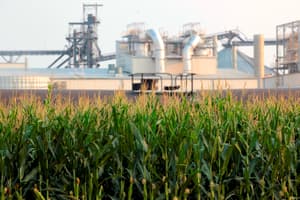The U.S. wind energy industry experienced its fastest first-quarter growth since 2009, installing 2,000 new megawatts of capacity — enough to power about 500,000 homes — on its way to producing 5.5 percent of the country’s electricity.
The American Wind Energy Association (AWEA) also reported that another 21,000 megawatts of wind energy capacity is now under construction or in advanced development — enough to power an additional 5 million average U.S. homes. The AWEA said that 908 utility-scale wind turbines were erected in the first quarter of 2017, driving a nearly four-fold increase in wind energy growth over the first quarter of 2016. Forty-one U.S. states — most recently Rhode Island and North Carolina — now have utility-scale wind power projects. Texas is by far the wind energy leader in the U.S., with a wind power capacity of 21,000 megawatts.
Federal credits for wind energy production, state renewable energy mandates, and falling costs to build and install wind turbines are all driving growth in wind energy capacity. The AWEA released statistics showing that the wind energy industry is increasingly becoming an important economic force in the U.S., giving it political clout in conservative states like Texas. The AWEA said that more than 100,000 people are employed in the wind industry and that wind energy companies now pay roughly $250 million a year in land lease payments to farmers, ranchers, and other landowners.
Hannah Hunt, a senior analyst at AWEA, said that a key technological development that will enable wind energy installations to be built in more parts of the country is an increase in the height of the turbines from 80 to 100 meters, where wind speeds are higher.



